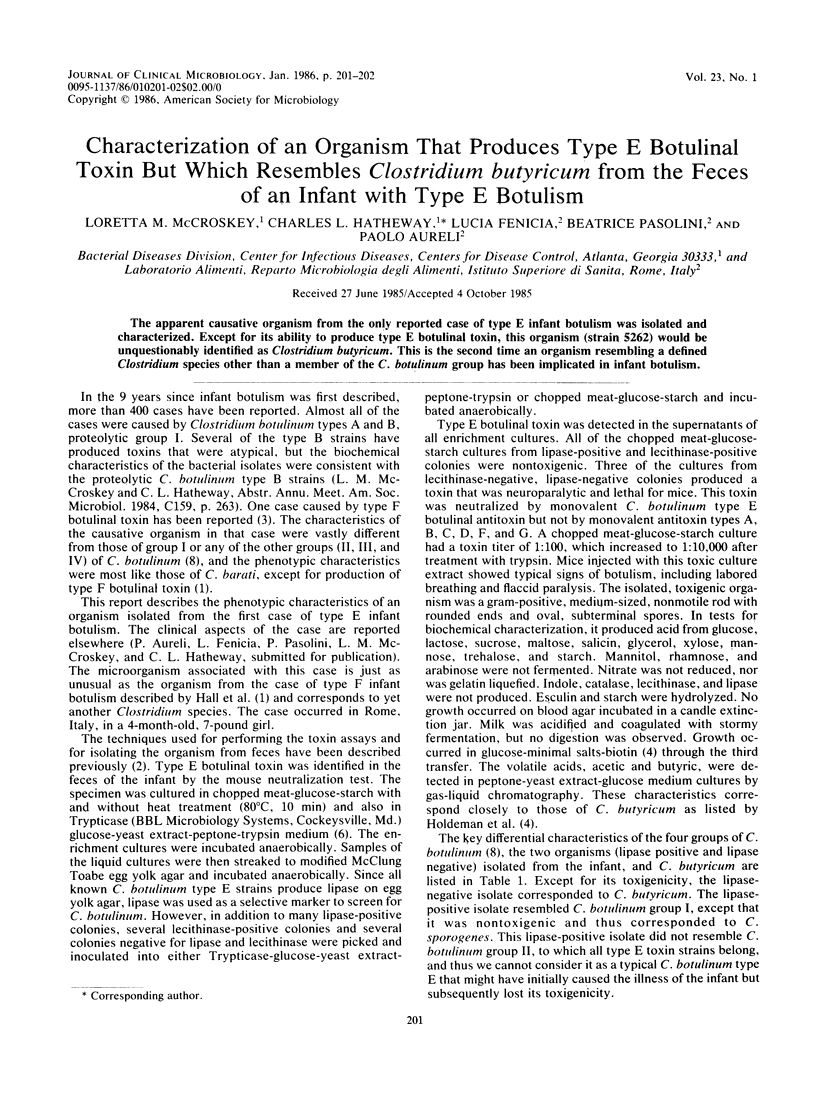Abstract
The apparent causative organism from the only reported case of type E infant botulism was isolated and characterized. Except for its ability to produce type E botulinal toxin, this organism (strain 5262) would be unquestionably identified as Clostridium butyricum. This is the second time an organism resembling a defined Clostridium species other than a member of the C. botulinum group has been implicated in infant botulism.
Full text
PDF

Selected References
These references are in PubMed. This may not be the complete list of references from this article.
- Hall J. D., McCroskey L. M., Pincomb B. J., Hatheway C. L. Isolation of an organism resembling Clostridium barati which produces type F botulinal toxin from an infant with botulism. J Clin Microbiol. 1985 Apr;21(4):654–655. doi: 10.1128/jcm.21.4.654-655.1985. [DOI] [PMC free article] [PubMed] [Google Scholar]
- Hatheway C. L. Laboratory procedures for cases of suspected infant botulism. Rev Infect Dis. 1979 Jul-Aug;1(4):647–651. doi: 10.1093/clinids/1.4.647. [DOI] [PubMed] [Google Scholar]
- Hoffman R. E., Pincomb B. J., Skeels M. R. Type F infant botulism. Am J Dis Child. 1982 Mar;136(3):270–271. doi: 10.1001/archpedi.1982.03970390084021. [DOI] [PubMed] [Google Scholar]
- Howard F. M., Flynn D. M., Bradley J. M., Noone P., Szawatkowski M. Outbreak of necrotising enterocolitis caused by Clostridium butyricum. Lancet. 1977 Nov 26;2(8048):1099–1102. doi: 10.1016/s0140-6736(77)90546-3. [DOI] [PubMed] [Google Scholar]
- Kautter D. A., Solomon H. M. Collaborative study of a method for the detection of Clostridium botulinum and its toxins in foods. J Assoc Off Anal Chem. 1977 May;60(3):541–545. [PubMed] [Google Scholar]
- Laverdière M., Robert A., Chicoine R., Salet D., Rosenfeld R. Clostridia in necrotising enterocolitis. Lancet. 1978 Aug 12;2(8085):377–377. doi: 10.1016/s0140-6736(78)92979-3. [DOI] [PubMed] [Google Scholar]
- Smith M. F., Borriello S. P., Clayden G. S., Casewell M. W. Clinical and bacteriological findings in necrotising enterocolitis: a controlled study. J Infect. 1980 Mar;2(1):23–31. doi: 10.1016/s0163-4453(80)91727-2. [DOI] [PubMed] [Google Scholar]
- Sturm R., Staneck J. L., Stauffer L. R., Neblett W. W., 3rd Neonatal necrotizing enterocolitis associated with penicillin-resistant, toxigenic Clostridium butyricum. Pediatrics. 1980 Dec;66(6):928–931. [PubMed] [Google Scholar]


